Sure, one big lure of a Panama Canal cruise is to experience the canal, one of the world’s most astonishing engineering feats (and there are two, now, to accommodate ever larger passenger and cargo vessels). And yet what I found intriguing as well was the other ports of call that ranged from private islands to jungles to quirky villages and also the absolutely fascinating and cosmopolitan cities of Cartagena and Panama City (pictured above).
While there are a range of Panama Canal itineraries that visit both Central and South American ports, there are two good first-time choices offering these highlights and more. “Costa Rica and Panama Canal,” a seven night trip between the former’s Puerto Caldera and the latter’s Colon, travels to small, out of the way ports along with Panama City.
On “Panama Canal, Cartagena, San Blas Islands & More,” you’ll travel between Panama City (Balboa/Fuerte Amador) and Aruba’s Oranjestad, with a focus on Colombia and Panama, both rural and urban. On both trips, the full-day transit of the Panama Canal occurs during daylight hours (critical if you want to be able to see everything).
One other benefit? If you love Windstar’s watersports platforms, the Costa Rica and Panama Canal trip offers three days at anchor.
Here are some highlights:
Panama City (Fuerte Amado/Balboa)
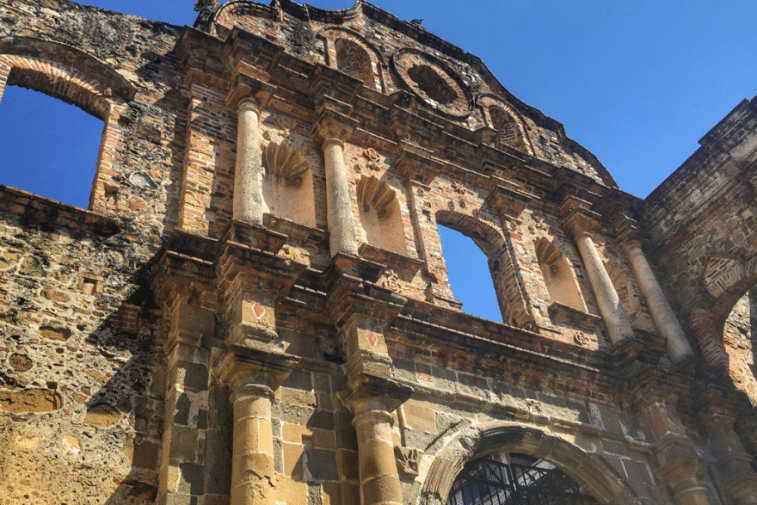
If your voyage begins or ends here, definitely plan to stay for an extra day or two because this city, which reminds me of a Central American Miami, has culture, history, and a gleaming urban skyline along with the rush and bother of a busy metropolitan area. It’s actually the closest port to the Pacific entrance of the Panama Canal. A quick cab from the pier will get you to one of the area’s must-see sights, the Frank Gehry-designed Biomuseo, impressive for its brightly colored architecture and exhibits highlighting the unique biodiversity that resulted from combining the Atlantic and Pacific. Reserve time in Panama City’s old town; it’s colonial-era homes and landmarks are beautifully preserved.
Balboa itself is one of the busiest container ports in the world, with its own fascinating attraction in the boats, ships, and even submarines that line up to cross through the Canal. It’s also a good place to shop for Molas, layered fabric pieces pattered with intricate needlework, made exclusively by Kuna indigenous women from Panama and Colombia.
Crossing the Panama Canal
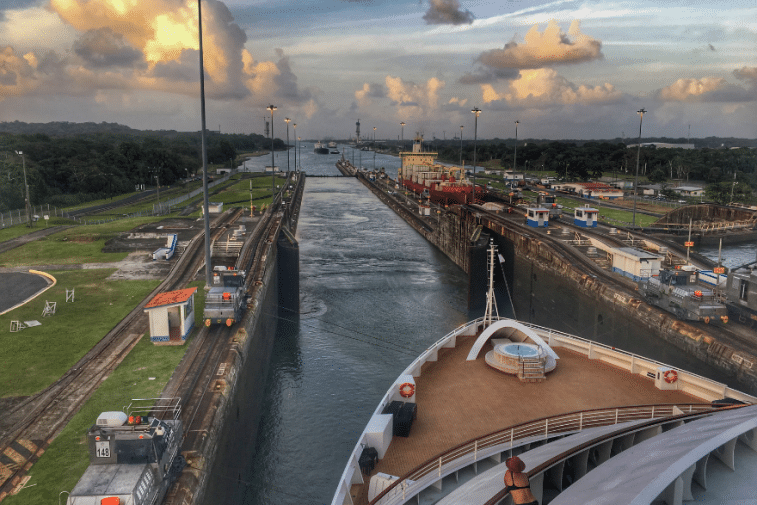
Transiting through the Panama Canal/Carolyn Spencer Brown
On my Panama Canal crossing, half my fellow passengers had brought along copies of a classic book on the Panama Canal. David McCullough’s The Path Between the Seas: The Creation of the Panama Canal, 1870 – 1914 will make it come alive like nothing else can.
Writes McCullough, “the creation of the Panama Canal was far more than a vast, unprecedented feat of engineering. It was a profoundly important historic event and a sweeping human drama not unlike that of war. Apart from wars, it represented the largest, mostly costly single event ever before mounted anywhere on earth. It held the world’s attention over a span of 40 years. It affected the lives of tens of thousands of people at every level of society and of virtually every race and nationality. Great reputations were made and destroyed. For numbers of men and women, it was the adventure of a lifetime.”
The idea of creating a canal that would connect the Atlantic to the Pacific was first recorded in the 16th century; it was finally constructed, from 1903 – 1914, by the U.S.
During a daytime crossing of the 50-mile-long Panama Canal, your ship is raised 85 feet from sea level, sails across Gatún Lake, and is lowered back to sea level. This takes place through a series of locks named for the places where they are located – Miraflores, Pedro Miguel, and Gatún.
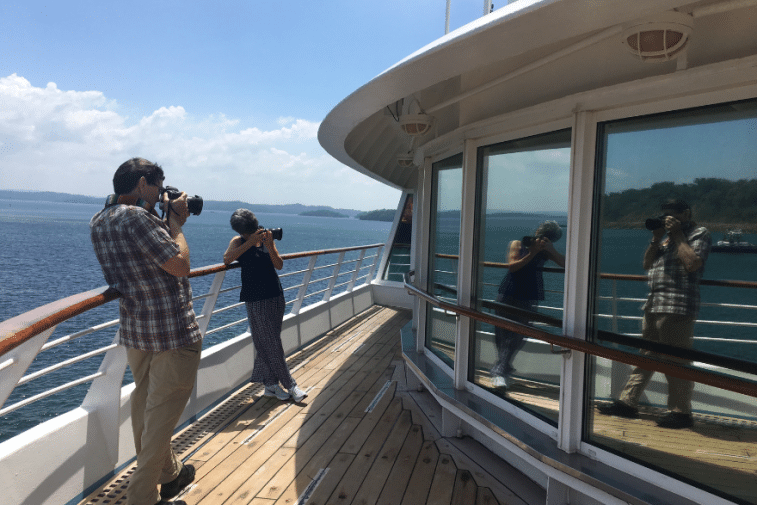
Catch views from many vantage points (we found ourselves mostly spending the day outside, enjoying the views, some of the more than 500 species of birds on its banks, and waving to the drivers of the “mules” (electric locomotives), equipped with ropes to guide your ship through the Canal’s locks and gates. It was also fascinating to travel along with other boats, cruise ships and cargo vessels. And one big surprise? The pastoral beauty of Lake Gatún.
An expert will be onboard to explain the history of the passageway – conceived by the Spanish, attempted by the French, finished by the U.S. and opened in 1914. It’s a story of tragedy and triumph.
Bocas Del Toro
Visited by Christopher Columbus in 1502, Bocas Del Toro is the capital of Bastimentos Island and home to colorful Caribbean-style clapboard houses built in the early 20th century by the United Fruit Company, an American firm and large producer of bananas. It’s a laidback, friendly place with a host of nearby eco-attractions: Some of the best white-sand beaches in the Caribbean, impressive coral formations, and wildlife such as bottlenose dolphins, sloths and rare red frogs. It’s also the site of a signature Windstar beach barbecue.
Many of the natural sights – including islands with untouched beaches – are protected in Panama’s 82-square-mile National Marine Park Isla Bastimentos, and it’s well worth an excursion to explore parts of the nature paradise, whether snorkeling or hiking.
San Blas Islands
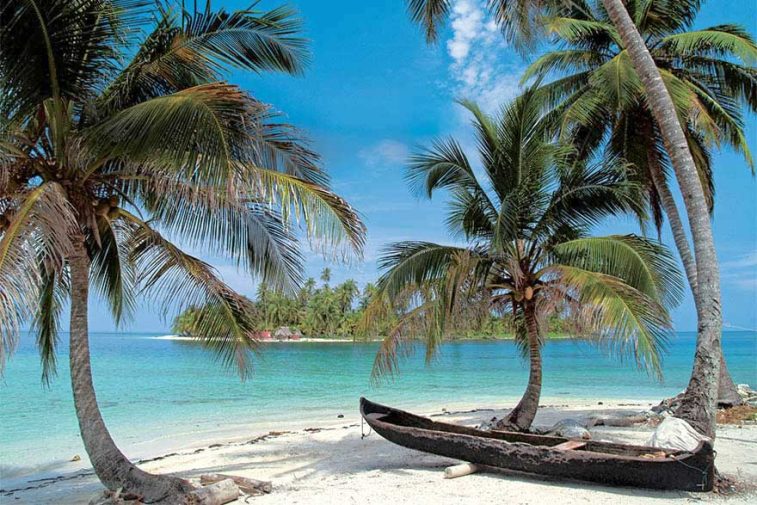
An archipelago of 378 islands and cays, the San Blas, also known as Guna Yala, is owned and managed by the Guna indigenous group. Only a few dozen of the islands are populated.
The remote white-sand beaches and swaying palms attract Panamanians and other tourists as does the coral reef with the kind of crystal-clear water you dream about for snorkeling or kayaking – sometimes with the company of dolphins, sharks and giant manta rays. To learn more about the Kuna people, book a tour to one of the thatched-hut villages. There will be opportunity to by colorful Molas crafts (using U.S. dollars).
Isla Parida
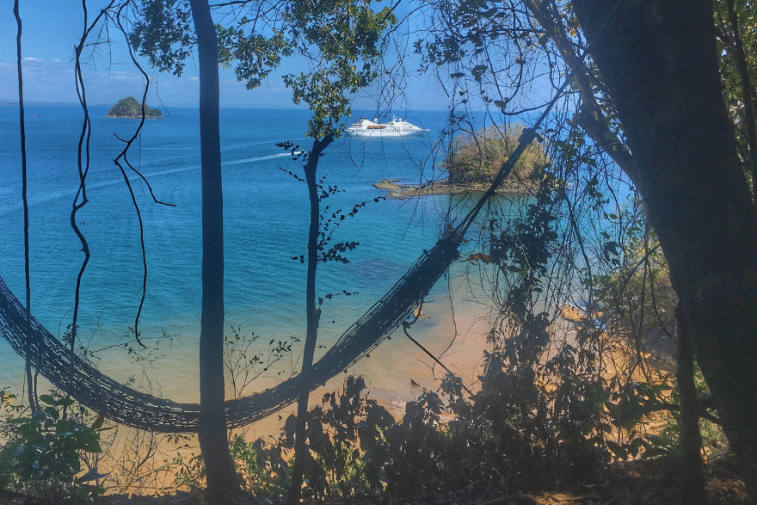
Isla Parida, in the Gulf of Chiriqui, is an absolute highlight of a Colon to Panama City voyage. It’s a wet landing, meaning your ship’s at anchor (a perfect day for its watersports platform) and you travel to the island in a soft-inflated Zodiac. It’s also the site of the cruise’s “signature beach party,” where crew prepare a festive barbecue on the beach. My favorite part of the experience was a hike up uphill – not too strenuous for a stunning view, pictured.
Cartagena
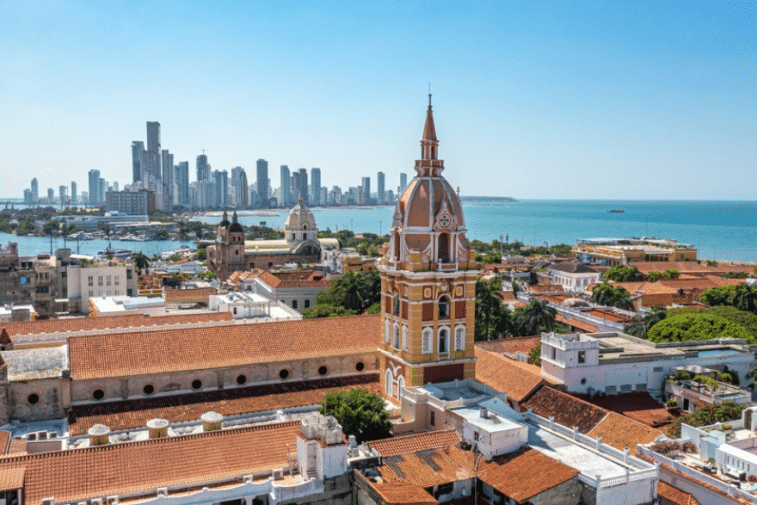
A joy of the city of Cartagena is walking the narrow streets and plazas of the historic center, a UNESCO World Heritage Site, with its restored Andalusian-style palaces, colorful colonial homes, cathedral, and churches.
Once one of the more important Caribbean port cities, Cartagena also has the most extensive fortifications in South America – including the massive 17th century Castillo San Felipe de Barajas fortress, considered one of the most important works of Spanish military engineering in Latin America.
Cultural attractions abound whether you are interested in Colombian coffee, chocolate, or native emeralds. Stop by the Las Bóvedas, once a dungeon, to peruse galleries and boutiques, and learn about Peter Claver, the patron saint of slaves, at the Iglesia y Convento San Pedro de Claver, a convent founded in the 17th century.
Bird lovers will not want to miss the flamingos, macaws, and Andean condors and other species at the National Aviary, where you will find a wealth of examples to support the fact that Colombia has more than 1,900 bird species.



















































